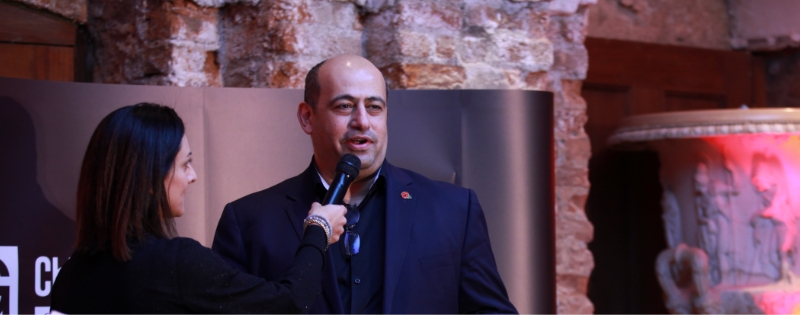The last two years provided the results of a social experiment we never knew we needed: Your office job can be done from home, at least sometimes.
But as we reintegrate, business leaders must ask themselves how they want to incorporate this new learning into the future workplace. They must consider the pioneering tools, platforms and tech that can facilitate their hybrid strategy, and – perhaps most importantly of all – they need to attain a high degree of buy-in from an increasingly empowered workforce.
Time for a Reality Check
“Hybrid work environments will be the default by 2024” predicts Claire Herrig, CLO at Blue Ocean Brain and keynote speaker at the GDS HR Innovation Summit. What’s more, leaders may need a “reality check” if they display continuous resistance to this embedding norm.
She refers to a Newsweek article that caught her attention, it outlines the disparity between the perspectives of C-suites and their workforces: “Going Back to the Office Is Stupid” it reads, “while 83% of CEOs want employees to return in person, only 10% of employees want to come back full time.”
But the reality check alone won’t cut it. Though remote and hybrid work offers an opportunity to better balance employees’ jobs and personal lives (Travel Perk found this to be their top-rated benefit) it also brings a new set of complications. The same Travel Perk report found that respondents’ biggest complaint around hybrid working was an inability to interact “face-to-face” followed by “decreased team communication.”
So, if hybrid is inevitable to the future workplace, how can leaders overcome these drawbacks to articulate a culture of inclusion, and offer the same opportunities to progress?
Avoid “Career FOMO”
Many of us have experienced the “fear of missing out” if we cannot attend a party or event. Bearing witness to the post-party debrief – all the laughs and memories for which you failed to be present – can be painful, even for the most introverted among us.
The same is true at work, but the fear of missing out revolves around learning, career development, networking, and even the chance to get that all-important promotion.
A recent Oracle Study found that 85% of employees aren’t satisfied with their employer’s support for their career, and 87% think their company should do more to listen to the needs of its workforce. In an era of hybrid and remote work, this sentiment runs the risk of being intensified.
So, it begs the question: How can leaders hone the skillsets and confidence of their remote workforce? What can be done to ensure the gift of opportunity isn’t geared disproportionately towards those who benefit from daily face-to-face contact?
Herrig calls on the importance of “bumping into” learning. The future of work demands that this spontaneous experience is replicated beyond the four walls of the workplace:
“Alongside mandatory training, make sure you’re layering-in opportunities for people to ‘bump into’ content that they need to see.”
Using online training as a key example, she explains that simply shelving training materials on their “own page on the intranet”, where employees must actively seek them out, will result in the content going unnoticed by most.
The Human Approach
One outcome of the social experiment brought on by the pandemic, when most of us had no choice but to work from home, was an unavoidable humanization of our leaders and colleagues. We gained a window of access to their homes, their personal tastes, and sometimes their unruly pets or younger family members.
“For better or for worse” explains Herrig “we had a way to connect with people unlike anything in history.”
Arguably, as we settle into the new normal, we cannot figuratively board those windows up and pretend the unique human touchpoint we collectively experienced never happened.
According to Herrig, measures must be taken to “continue those human connections” – including in the design of meetings whereby workers who are dialling in, can see and hear as easily as those who are physically in the room.
Additionally, utilising technology, tools and platforms that are specifically designed to enable inclusion in a hybrid environment ought to be integral to an executive’s future workplace strategy. Within this, it is important to consider how workers can be made to feel empowered – rather than intimidated – by these tools, and able to maximise their full potential.
Sharing the Big Picture Stuff
If your team are asking: “What is the point in doing this?” It is likely that something has gone wrong, presumably in the articulation of how their contribution feeds into the organization’s overall mission. Once again, the increased disconnect between hybrid and remote workers poses a more urgent challenge to this.
In her keynote, Herrig references Simon Sinek’s “Golden Circle” which emphasises prioritising the “why” over the “what” and “how.”
Although this model usually refers to a sales context in enticing customers towards a product, Herrig argues it applies equally to employee care and culture.
If leaders find themselves entirely task-driven when approaching their teams, they may struggle to win over hearts and minds. An effective antidote to this, could be to communicate the way in which their roles and projects feed into the big picture. This way, team members will be more likely to take on a new initiative (even if they disagree with it).
As we navigate the uncertainty of the future workplace, one thing – at least – is certain: There is no one-size-fits-all approach. Therefore, as leaders zero-in on their own nuanced inclusion strategies, they are encouraged to ask more questions than ever before.
“One of the things I’ve learned is a leader” shares Herrig “[is that] we can’t build in a vacuum.”
GDS Summits are tailored 3-day virtual event conferences that bring together business leaders and solution providers to accelerate sales cycles, industry conversations and outcomes. Regarding the HR Digital Summit 88% of Delegates said the overall experience of the Digital Summit they attended was either Above Average or Excellent and 100% of Delegates said the Digital Summit provided them with actionable outcomes to support their current initiatives.
For more, click here to hear from attendees on how GDS has helped them to achieve their business outcomes.
Continue the debate at GDS’ HR Summits where we bring together senior human resources executives who are actively seeking to share, learn, engage, and find the best solutions.












